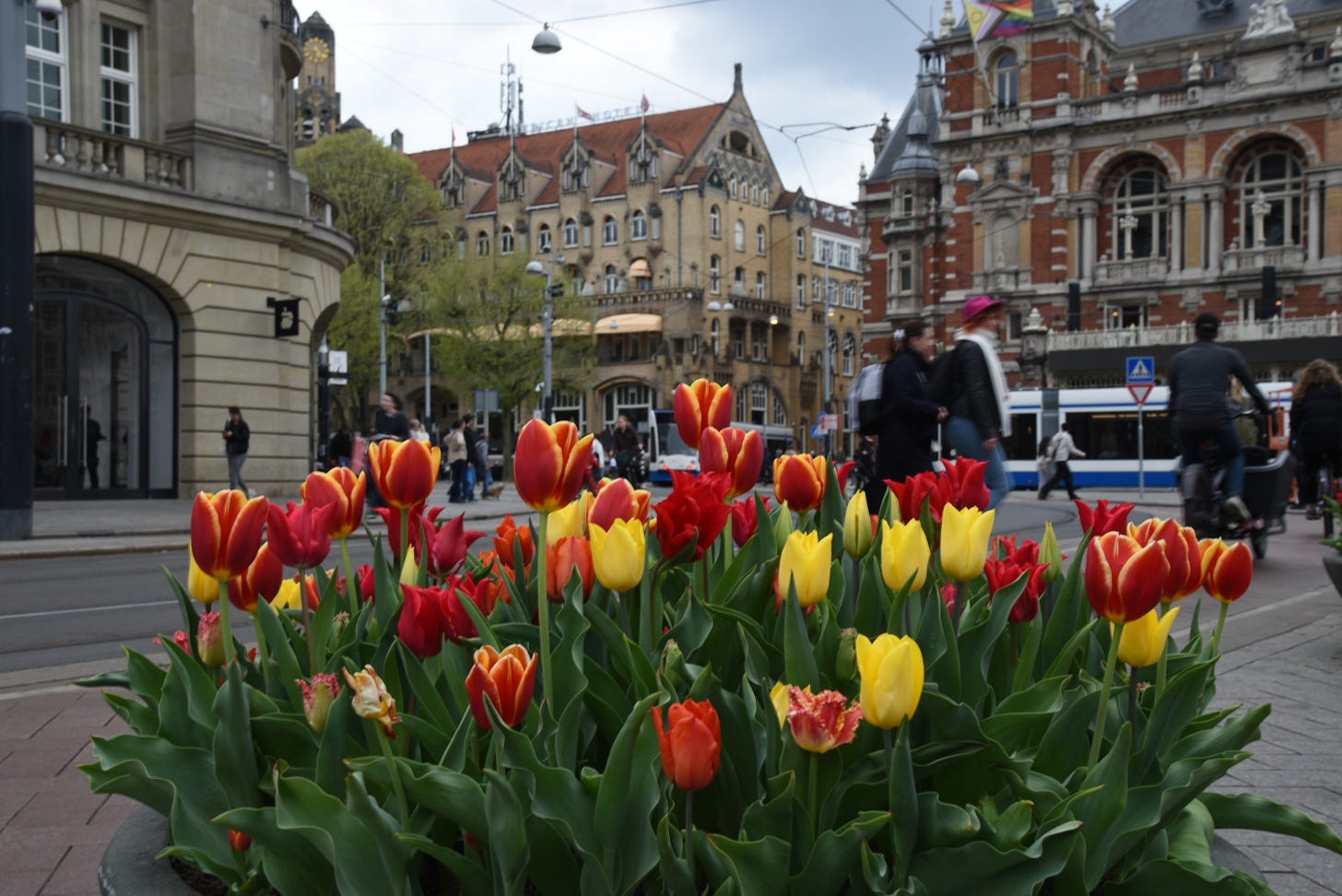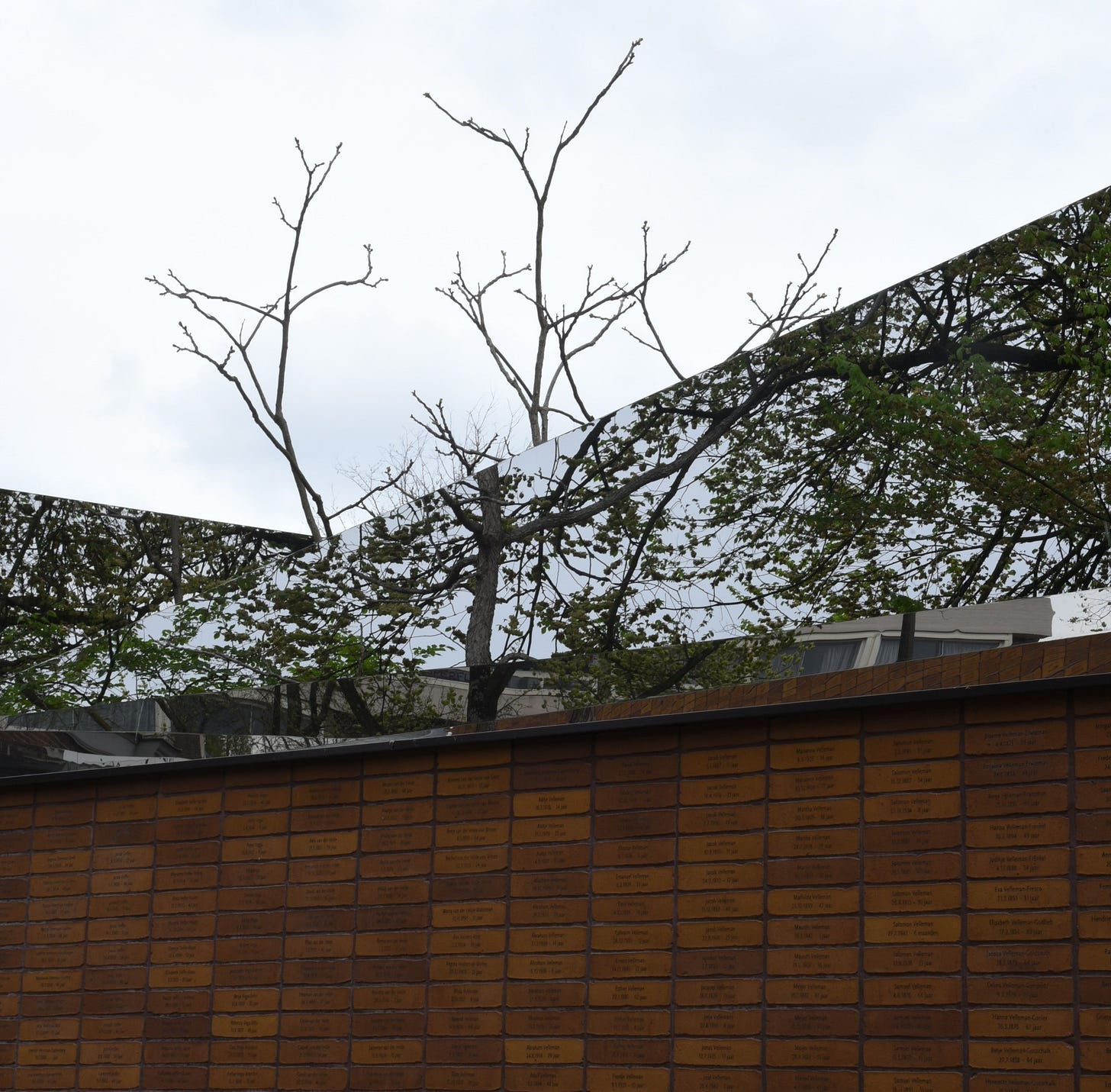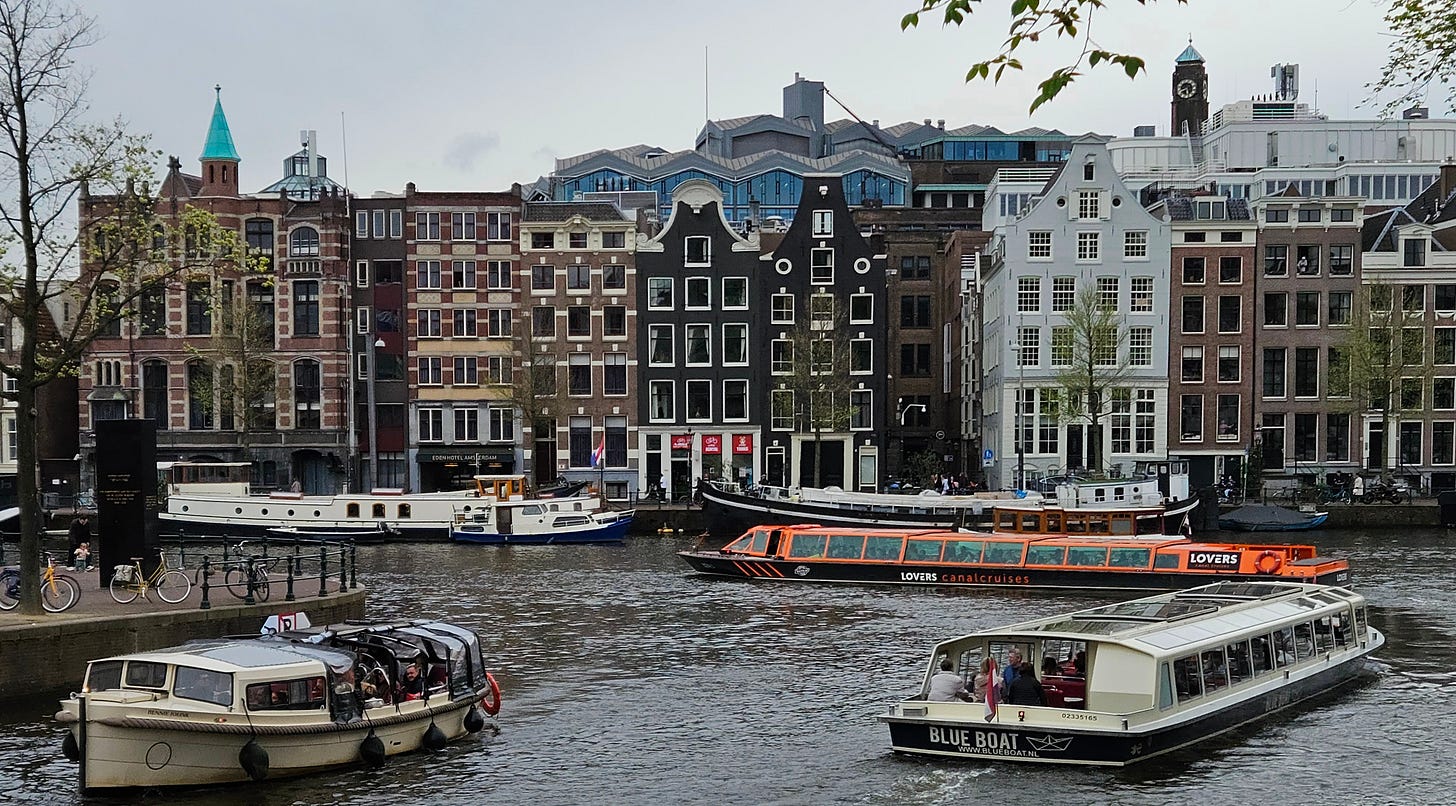Outpost #4: Amsterdam (photo blog)
We visited Amsterdam, Brussels, Luxembourg and a few cities in Belgium.
I took a break from political commentary and other activities when we left for a brief visit to the Netherlands and Belgium, with a day trip to Luxembourg. Inspired by the reproduction of the Anne Frank house at the Center for Jewish History in NYC, we thought we might see the original in Amsterdam over the spring break. It turned out that it was already sold out, but we decided to make the trip anyway. After flying into Brussels we hopped on a train to Amsterdam - there’s a work stoppage on Belgian trains every few days right now, but we managed to get there after some re-routing.

The highlight of Amsterdam for us was two museums. We spent half of the first full day in the Rijksmuseum, where apart from some famous Rembrandts and Vermeers you can see a lot of Northern European art that’s quite different from what you find in Florence or Paris. I have always been a fan of Hobbema and Ruisdael, and the museum did not disappoint. The building itself was constructed in a neo-medieval style that initially drew a lot of criticism, but is now revered as a city icon.

The second day we found our way to the Jewish Museum, a small but interesting institution that is running a show called “Jewish Sex Positions”! Hold your lascivious thoughts - it is not the Hebrew version of the Kama Sutra, but an investigation of Jewish mating, dating and other sex-related activities. (There are a few explicit pieces, but most of it would not shock anyone.) By sheer coincidence, a week before our trip I was contacted by a curator at the museum regarding the use of some photographic works by my uncle Harold Roth in a future exhibit. So when we got there we met up with a freelance curator who was working on the show and managed to get us complimentary admission. Heading down to the cafeteria for lunch we had a completely kosher-for Passover meal with matzohball soup and potato tsimmes.
Just a week after we came home, Mayor Femke Halsema of Amsterdam issued an apology for the role the city played in the Holocaust. In spite of the well-known heroism of some individuals, like those who helped hide the Frank family, after the Nazis invaded the Netherlands the city government did much to assist them in tracking down Jews and shipping them off to concentration camps. There is a moving Holocaust memorial there, with a brick for each of the thousands of Dutch Jews known to have been murdered by the Nazis.

One of the more ironic aspects of this history is that prior to the invasion, a center was established for the reception of Jewish refugees from Nazi-occupied Europe. This center was turned into a departure point for transporting Jews to the death camps. (Some of this history, as well as happier aspects of Jewish life, is told through interactive exhibits at the Jewish Museum.) The mayor was courageous enough to deplore the anti-Semitism that is still in evidence there, as it has been throughout Europe and the U.S., especially since the October 7 massacre in Israel.
Outside the museums, Amsterdam can be challenging. I would characterize as a city I might want to live in, but perhaps not visit too often. In spite of the labyrinth of canals it does not have a particularly European feel, at least not compared with many other European cities. There is something unique about its waterside housing, as well as the many houseboats that line the canals, but you have to look up at the steep vaulted roofs

My fantasy picture of Dutch matrons rushing out to the street with a broom if so much as a candy wrapper appears in front of the house is more or less the diametric opposite of present reality: it is about as dirty as New York, with litter, graffiti and other signs of low maintenance. I’m sure many residents would blame tourists, immigrants and anyone but fine upstanding Dutch citizens, but the bottom line is that it did not strike me as obsessed with urban hygiene.
The gut feeling of being outdoors in Amsterdam can be expressed in two wheels: bicycles! The city is a a bike-archy, where proud denizens mounted on weighty frames rule the metropolis. Many areas have dedicated and well-populated bike lanes marked in red, and these may be distinguished from pedestrian sidewalk paths by a single painted line. The careless visitor who ventures to place a few toes in the bike lane risks at least a chorus of catcalls from passing riders, if not physical danger. Sometimes the bike lane shares the street, as in New York; but the risk of stepping into one by mistake is far higher than it usually is here. Bikes seem to come at you from all angles; the belief that if you don’t see a car you are safe to cross a street can be a fatal error. Although the pedestrian is by no means welcome to trot down a bike lane, bicycles seem to be welcome (or welcome themselves) virtually anywhere except (usually) on busy sidewalks; absence of a bike lane certainly does not mean absence of bikes. The riders are not the least bit lazy, either: they fly along, often with a cell phone in one hand and a briefcase on the back, and sometimes carrying groceries, or extra passengers.
Interestingly, there do not seem to be any statistics on pedestrian injuries by bicycles in Amsterdam. It would not surprise me, though, if there are relatively few. Tourists may be at the greatest risk, as residents quickly acquire life-saving knowledge of where the risks are. Bicycles can quickly maneuver around a pedestrian more easily than an automobile can, even while texting with one thumb and shouting an obscenity at the interloper. Cyclists themselves account for half the traffic fatalities in the Netherlands, so apparently it is more dangerous to be on a bike than in the path of one.
The city also sports a network of trams running on electric cables. These also share the streets with bicycles, other vehicles and pedestrians, with no real separation.

It made me think back to the Manhattan railroad line that used to run at ground level, where the High Line is now. So many pedestrians were hit by trains that 10th Avenue became known as “Death Avenue”, and the city hired people to ride on horseback in front of the trains to keep them from exceeding 6 mph - they were known as the “West Side Cowboys”. I didn’t see any cowboys in Amsterdam, or any accidents. But it takes a lot to make a guy who spent 7 years as a bike messenger in Midtown Manhattan feel unsafe in the street.

As Athens is famous not only for its philosophers but for its mistreatment of them, Amsterdam has a history to match, though in this case the fault goes not to those in power, but to the Jewish establishment that excommunicated the gentleman below. I refer to the one on the left, of course.
Next post: Brussels, Luxembourg, Dinant, Ghent and Bruges.
Note: All photos ©2025, Anton Alterman.




